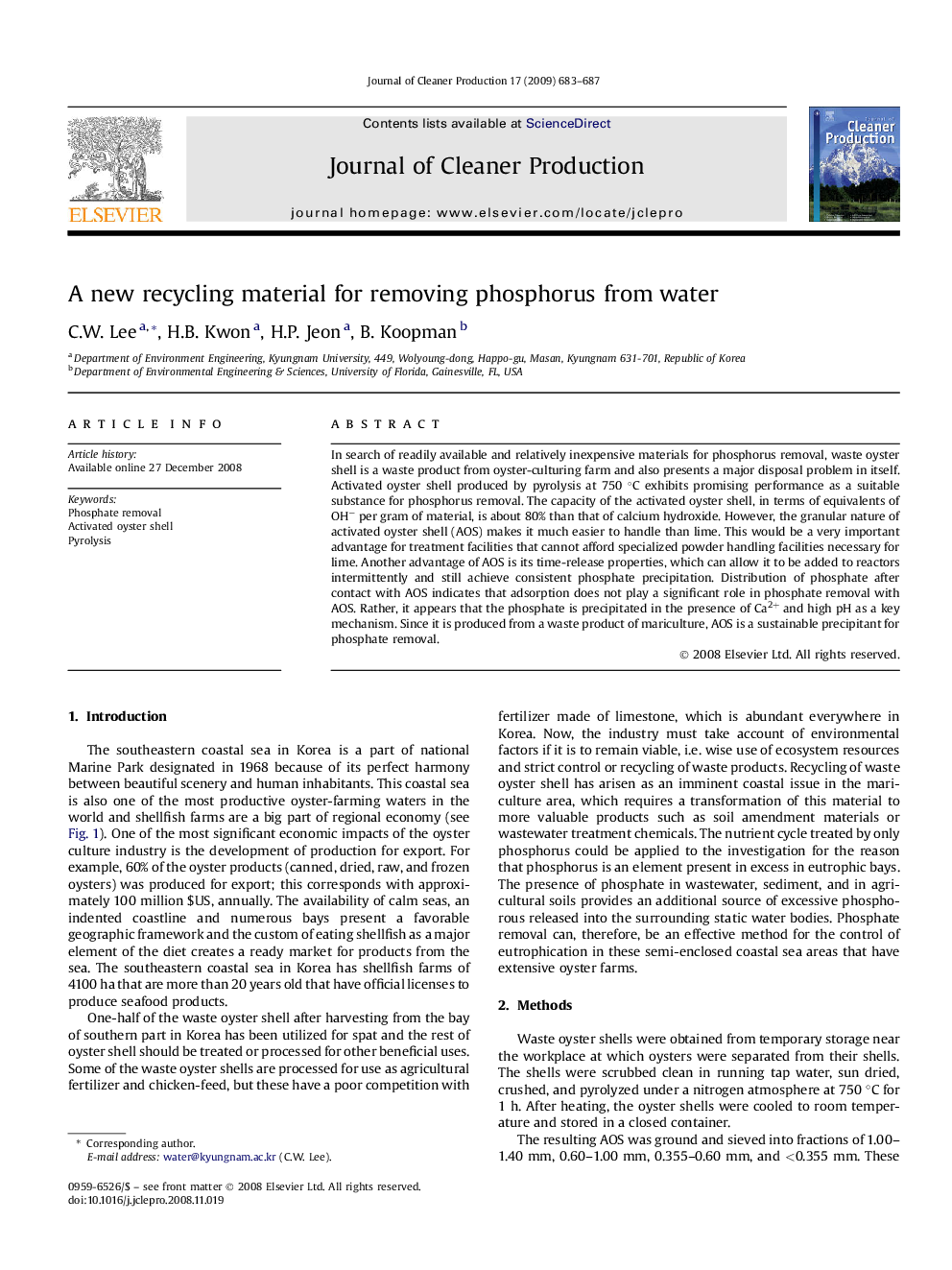| Article ID | Journal | Published Year | Pages | File Type |
|---|---|---|---|---|
| 1746680 | Journal of Cleaner Production | 2009 | 5 Pages |
In search of readily available and relatively inexpensive materials for phosphorus removal, waste oyster shell is a waste product from oyster-culturing farm and also presents a major disposal problem in itself. Activated oyster shell produced by pyrolysis at 750 °C exhibits promising performance as a suitable substance for phosphorus removal. The capacity of the activated oyster shell, in terms of equivalents of OH− per gram of material, is about 80% than that of calcium hydroxide. However, the granular nature of activated oyster shell (AOS) makes it much easier to handle than lime. This would be a very important advantage for treatment facilities that cannot afford specialized powder handling facilities necessary for lime. Another advantage of AOS is its time-release properties, which can allow it to be added to reactors intermittently and still achieve consistent phosphate precipitation. Distribution of phosphate after contact with AOS indicates that adsorption does not play a significant role in phosphate removal with AOS. Rather, it appears that the phosphate is precipitated in the presence of Ca2+ and high pH as a key mechanism. Since it is produced from a waste product of mariculture, AOS is a sustainable precipitant for phosphate removal.
